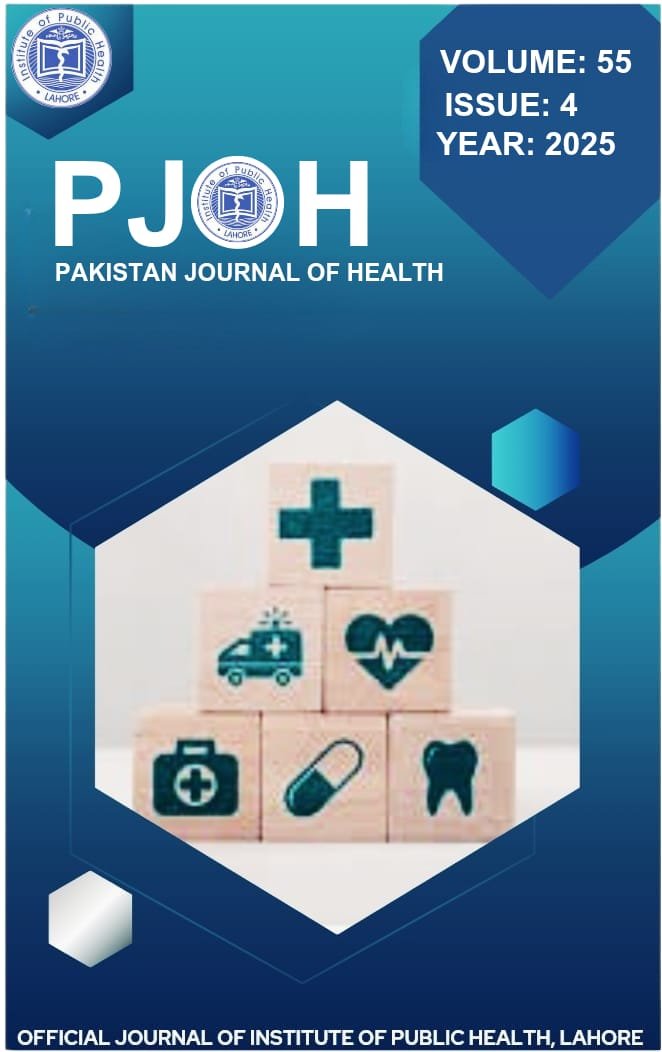Socioeconomic Determinants of Nutritional Status in Primary School Children: The Interplay of Poverty, Limited Educational Attainment, and Food Insecurity
Abstract
Malnutrition among school-going children is a significant public health concern globally. This cross-sectional study aimed to assess the nutritional status of children aged 5-15 years in Union Council (UC) 185, Gulberg Zone, Lahore, and determine the association between socio-demographic factors and dietary outcomes. A sample of 200 children was selected using simple random sampling. Data was collected using a semi-structured questionnaire and anthropometric measurements, and analyzed using SPSS 20.0. Chi-square tests were used to examine associations between variables.
The mean age of the children was 12.93 ± 0.92 years, with a mean weight of 38.45 ± 5.28 kg, a mean height of 123.59 ± 9.51 cm, and a mean BMI of 27.2 ± 3.8 kg/m2. The nutritional status of the children was as follows: 16.5% were overweight, 15% were underweight, 12% were obese, 27.5% were stunted, and 22.5% were wasted. Significant associations were found between BMI, stunting, and wasting with age (< 10 years), gender (female), working mothers, large family sizes, and lower educational attainment (grades 1-5). Illiterate fathers and higher income were significantly associated with BMI and stunting.
Dietary deficiencies pose a serious health challenge, necessitating targeted interventions to improve nutritional habits and health outcomes. The findings of this study highlight the need for policymakers and healthcare professionals to develop strategies that address the socioeconomic determinants of malnutrition and promote healthy nutrition among school-going children.
Downloads
Published
Issue
Section
License
Copyright (c) 2025 Pakistan Journal Of Health

This work is licensed under a Creative Commons Attribution 4.0 International License.

